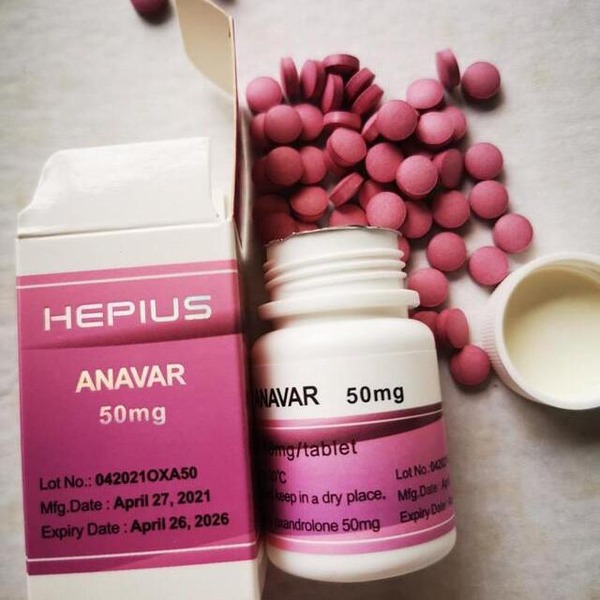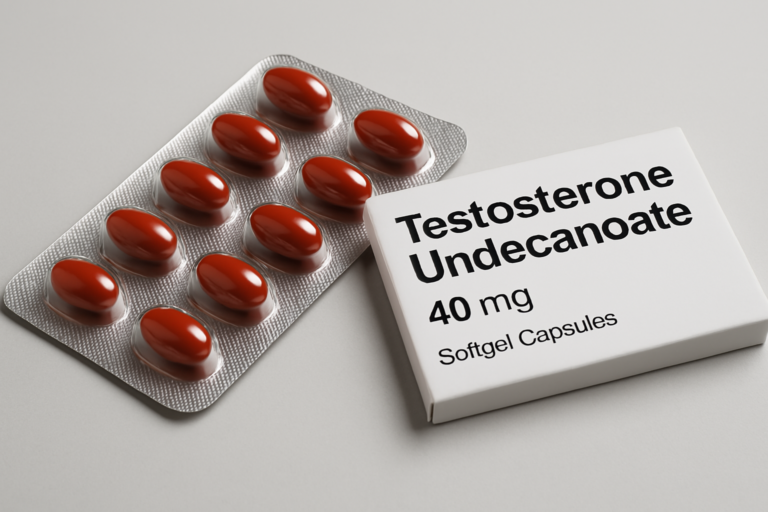What Are Anabolic Steroids?
Most anabolic steroids are based on modified forms of testosterone. These modifications are designed to enhance the anabolic (muscle-building) properties of testosterone while minimizing its androgenic (male characteristic promoting) effects, although it is impossible to completely separate the two types of effects.
The chemical structure of testosterone is altered in various ways to create different types of anabolic steroids. These alterations can affect how the steroid is absorbed by the body, how it is broken down, and how long it remains active in the bloodstream. Some common modifications include:
- Alkylation at the 17-alpha position: This modification helps the steroid resist being broken down by the liver, allowing it to be taken orally and remain effective.
- Esterification: This involves adding an ester group to the steroid molecule, typically at the 17-beta hydroxyl group. This modification affects the steroid’s solubility in fats and, consequently, its release into the bloodstream. Esterification allows for a slower release of the steroid, extending its activity and reducing the frequency of injections.
- Modifications to the ring structure: Changes to the core structure of the steroid molecule can enhance its anabolic properties and reduce androgenic side effects.
Through these modifications, scientists aim to increase the therapeutic benefits of anabolic steroids (like muscle growth and recovery) while reducing the risk of side effects associated with high levels of testosterone.
Some of the Anabolic Steroids formed by modifying testosterone
Anabolic steroids, by altering the body’s natural hormonal balance, can produce a variety of effects, both intended and unintended. Here are some examples of commonly used anabolic steroids along with their effects:
1. Dianabol (Methandrostenolone)
- Intended Effects: Rapid increase in muscle mass, enhanced nitrogen retention, and increased protein synthesis.
- Side Effects: Liver damage, increased risk of heart disease, mood swings, and aggressive behavior.
2. Deca-Durabolin (Nandrolone Decanoate)
- Intended Effects: Promotes muscle growth, increases red blood cell production, and enhances recovery from injuries.
- Side Effects: Potential cardiovascular issues, hormonal imbalances like reduced natural testosterone production, and in some cases, erectile dysfunction.
3. Anavar (Oxandrolone)
- Intended Effects: Mild gains in muscle mass, significant fat loss, and increased strength.
- Side Effects: Less hepatotoxic (liver damaging) than many other steroids but can still cause liver damage, cholesterol issues, and suppressed testosterone levels.
4. Trenbolone
- Intended Effects: Massive muscle gains, increased strength, and decreased fat deposition.
- Side Effects: Severe aggression, insomnia, severe sweating, potential cardiovascular strain, and impact on mental health.
5. Testosterone Enanthate
- Intended Effects: Overall muscle growth, improved recovery times, and increased endurance.
- Side Effects: Risk of gynecomastia (development of breast tissue in men), hair loss, acne, and significant suppression of natural testosterone production.
6. Winstrol (Stanozolol)
- Intended Effects: Increases strength and endurance without resulting in significant weight gain.
- Side Effects: Joint pain, liver damage, potential cardiovascular complications, and changes in cholesterol levels.
Mechanism and Impact
Anabolic steroids work primarily through their interaction with androgen receptors in muscle cells, promoting cell growth and division. This can lead to increased muscle size and strength, as well as changes in physical appearance and body composition. However, because these steroids also affect other parts of the body, they can disrupt normal hormonal functions and lead to significant health issues.
Oral Vs Injectable

Oral Vs Injectable
When considering anabolic steroids for enhancing physical performance or muscle building, the method of administration—either oral or injectable—has significant implications for both effectiveness and safety. Each method has its unique set of pros and cons.
Injectable Anabolic Steroids

Pros:
- Lower Liver Toxicity: Unlike oral steroids, injectables are typically less hepatotoxic because they bypass the liver on initial pass and directly enter the bloodstream. This reduces the risk of liver damage.
- Longer Half-Life: Injectable steroids often come with ester attachments that regulate their release and prolong their activity in the body. This means fewer administrations compared to oral forms, which can improve compliance with dosing schedules.
- Potentially More Effective: Some argue that injectable steroids are more effective in terms of enhancing muscle mass and strength because they can be formulated to have a sustained action, leading to a more stable hormonal environment.
Cons:
- Invasive: Injections can be painful and may lead to complications such as infections at the injection site, scarring, or nerve damage if not administered properly.
- Inconvenience: Requires sterile techniques and equipment for administration, which can be a hindrance for some users, especially those who are uncomfortable with needles.
- Stigma and Legal Concerns: The use of needles is often more heavily stigmatized and can be associated with more severe legal penalties in certain jurisdictions.
Oral Anabolic Steroids

Pros:
- Convenience: Oral steroids are easy to take, require no special equipment or techniques, and are less intimidating for new users. This ease of use makes them more appealing to those hesitant about injections.
- Fast-Acting: Oral steroids generally enter the bloodstream quickly and can produce rapid results in terms of muscle gain and strength improvements.
Cons:
- Liver Damage: Orals are often more hepatotoxic than injectables. They must pass through the liver to enter the bloodstream, where they are metabolized, placing significant stress on the liver. This can lead to liver damage or liver disease with prolonged use.
- Shorter Duration of Effect: Oral steroids typically have shorter half-lives, requiring more frequent dosing (often multiple times a day), which can lead to greater fluctuations in hormone levels and more pronounced side effects.
- Increased Risk of Gastrointestinal Problems: Oral steroids can irritate the gastric lining, leading to issues like stomach ulcers or gastritis.
Summary
Both oral and injectable steroids have their place in therapeutic and enhancement settings, depending on the user’s goals, preferences, and tolerance for side effects. Injectable steroids are generally considered safer for the liver and more effective over the long term but come with the inconvenience and risks associated with injections. Oral steroids offer convenience and quick results but at the potential cost of greater health risks, particularly concerning liver health.
The differing legal status in various countries
Anabolic steroids, synthetic substances related to the male sex hormones like testosterone, are used for promoting muscle growth and enhancing athletic performance, but they also come with significant health risks. Their legal status varies widely across different countries, reflecting diverse approaches to healthcare, sport, and drug regulation. Here’s a breakdown of how different regions handle the legality of anabolic steroids:
United States
In the U.S., anabolic steroids are classified as Schedule III controlled substances under the Controlled Substances Act. This classification makes it illegal to manufacture, distribute, or possess steroids without a prescription. Medical use of steroids is strictly regulated, and prescriptions are generally only issued for legitimate medical conditions—not for bodybuilding or performance enhancement.
United Kingdom
In the UK, anabolic steroids are classified as Class C drugs under the Misuse of Drugs Act. Possession of steroids for personal use is not a criminal offense, but it is illegal to supply or produce them without a license. Prescriptions are required for legal medical use, and there are strict regulations against using them for performance enhancement.
Australia
In Australia, anabolic steroids are classified under Schedule 1 of the Standard for the Uniform Scheduling of Medicines and Poisons, which includes drugs with a high potential for abuse and addiction. Possession, use, and supply require a prescription, and there are significant penalties for illegal supply.
Canada
Anabolic steroids are listed as Schedule IV controlled substances under the Canadian Controlled Drugs and Substances Act. This allows for legal possession of steroids with a prescription, but trafficking or exporting steroids can lead to significant penalties.
India
In India, the use and possession of anabolic steroids without a prescription are not regulated by a specific, dedicated law but fall under the Drugs and Cosmetics Act which controls the import, manufacture, and distribution of drugs. Enforcement varies significantly across different states.
Brazil
Brazil has strict laws against the non-medical use of anabolic steroids. They are controlled substances, and possession without a prescription can lead to imprisonment and fines.
Russia
Russia has moderate regulations concerning anabolic steroids. They are available under prescription, but the law is less strict about possession without prescription compared to Western countries.
Japan
Japan has very strict drug laws that categorize anabolic steroids similarly to other controlled substances. Possession, sale, and manufacture can lead to severe legal consequences, including prison time.
South Africa
In South Africa, steroids are listed as Schedule 3 substances under the Medicines and Related Substances Control Act. They require a prescription, and unauthorized sale or possession is illegal.
Summary
Overall, while many countries allow the prescribed medical use of anabolic steroids for treating conditions like hormone imbalances and muscle-wasting diseases, the non-medical use—particularly for sports or bodybuilding—is generally illegal and subject to various penalties ranging from fines to imprisonment. The strictness of enforcement and the severity of penalties can vary widely from one country to another.






